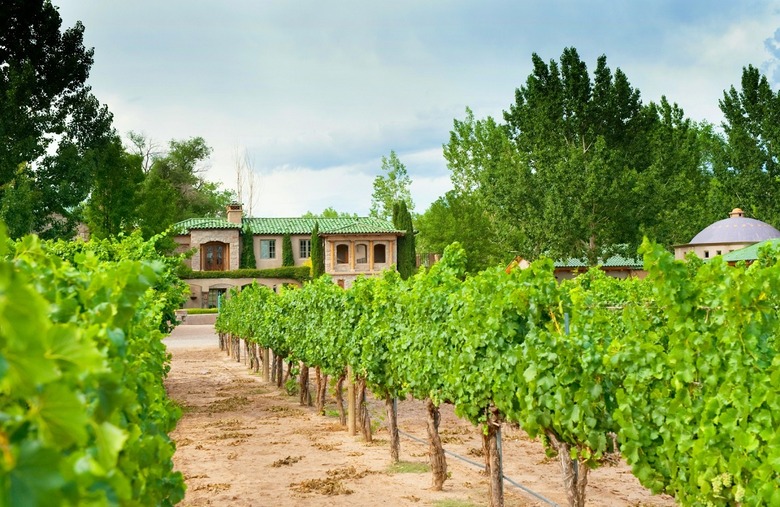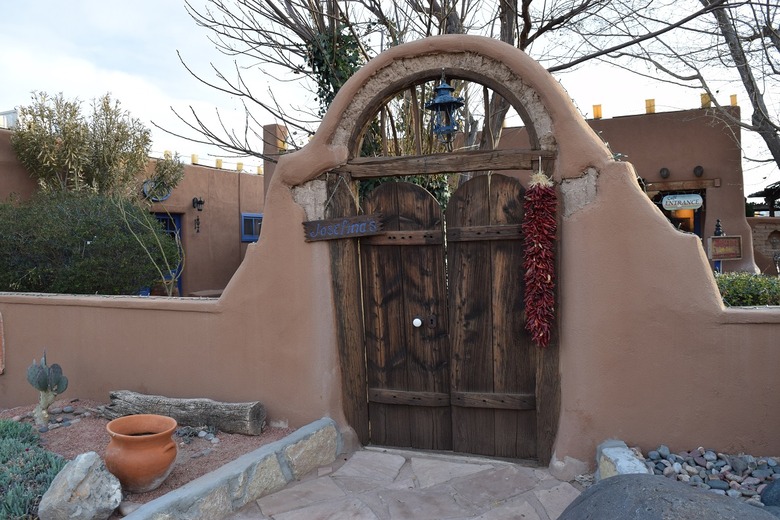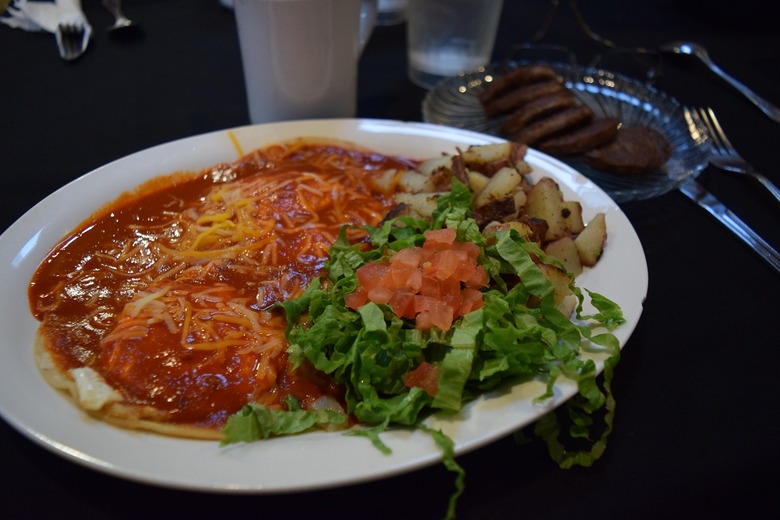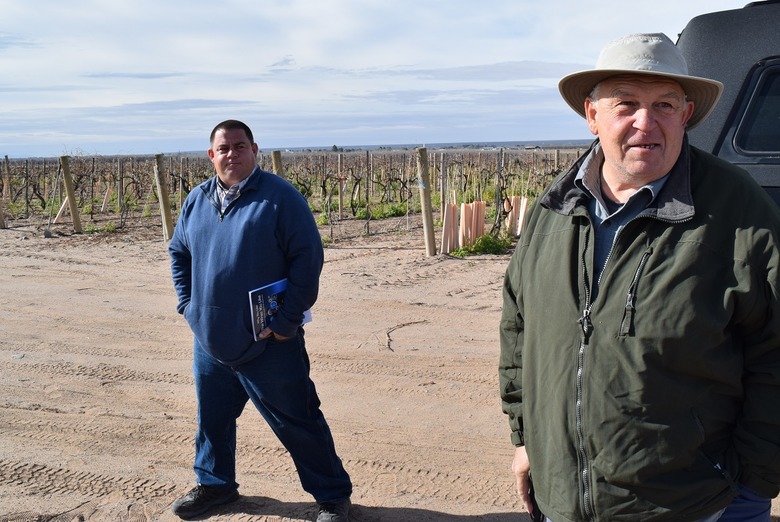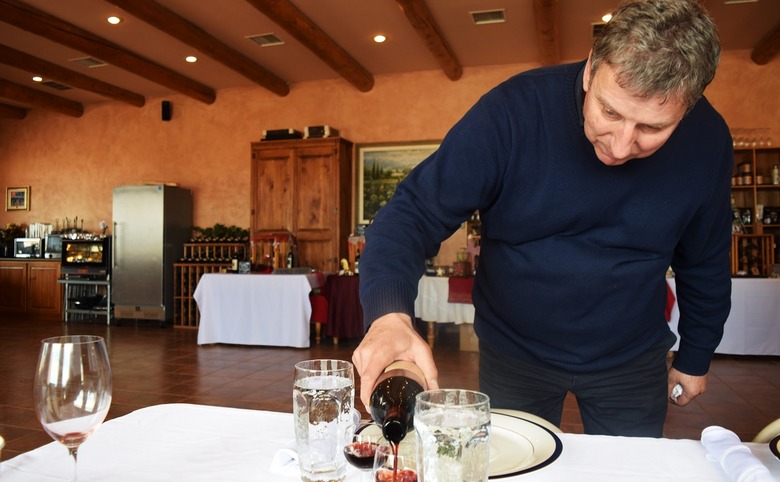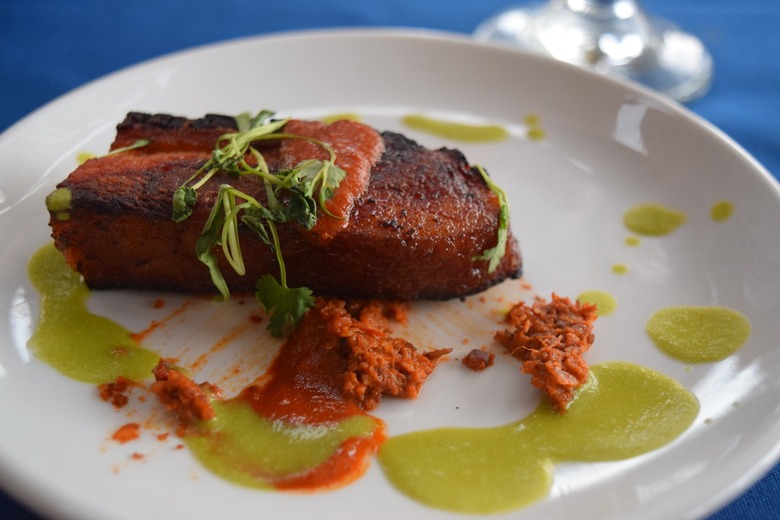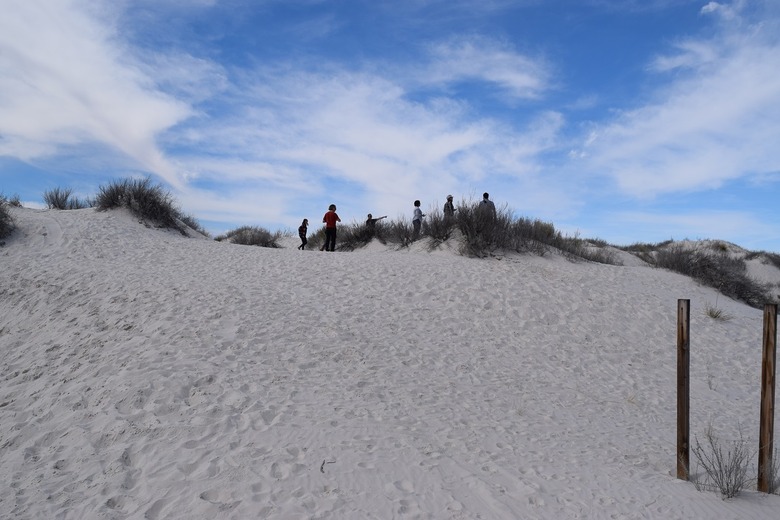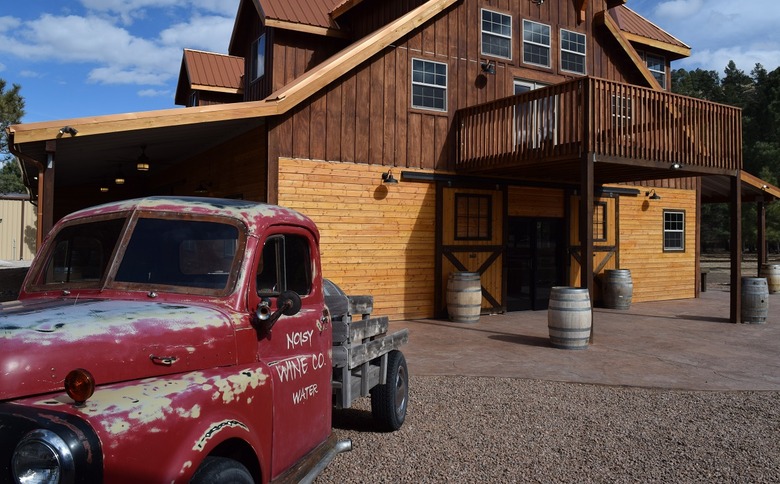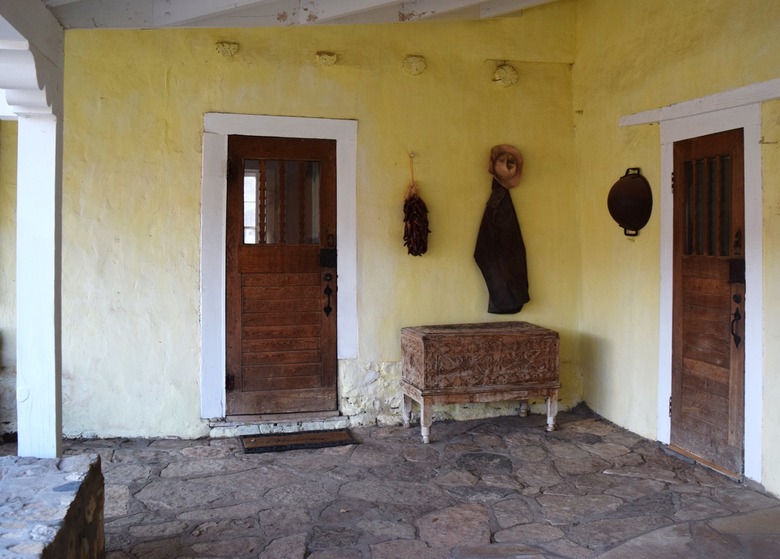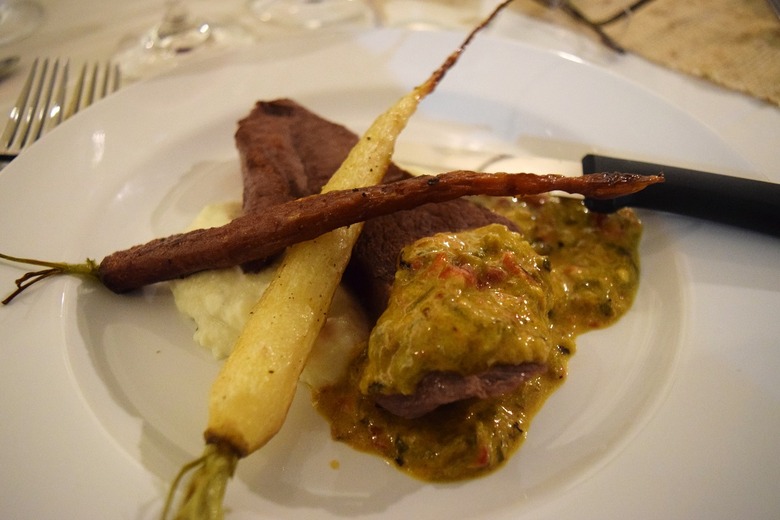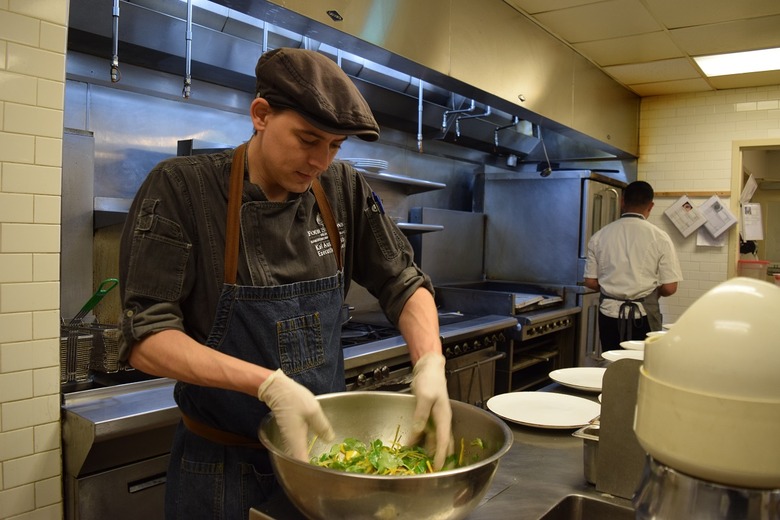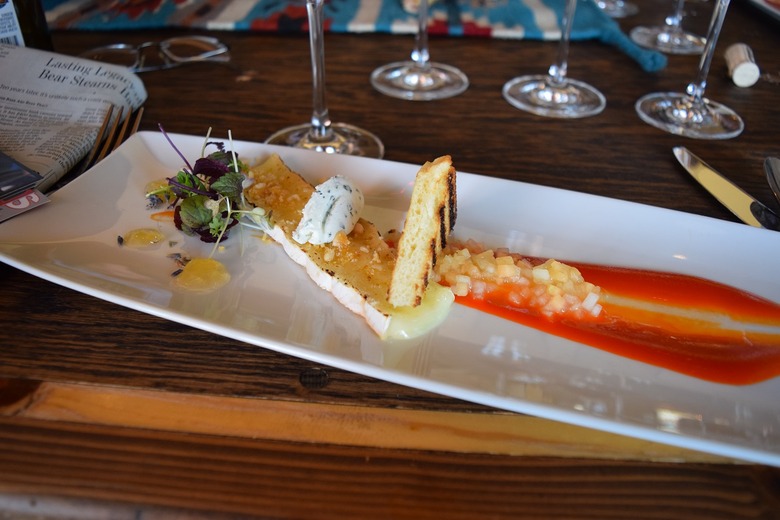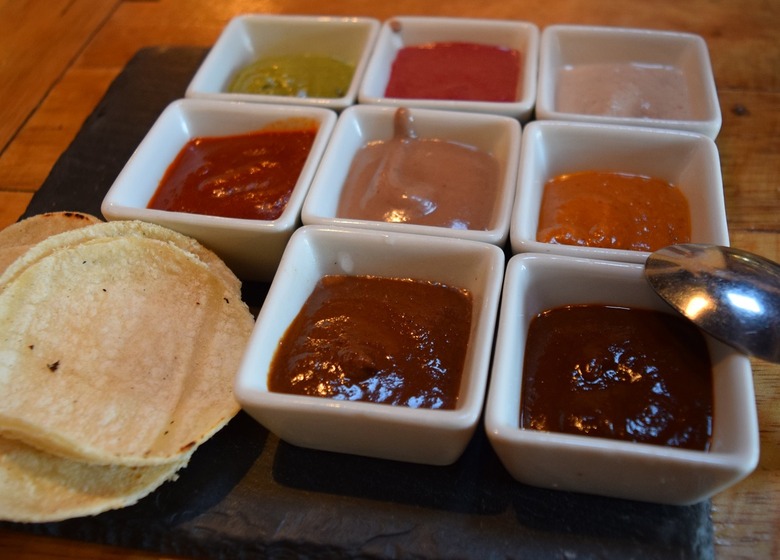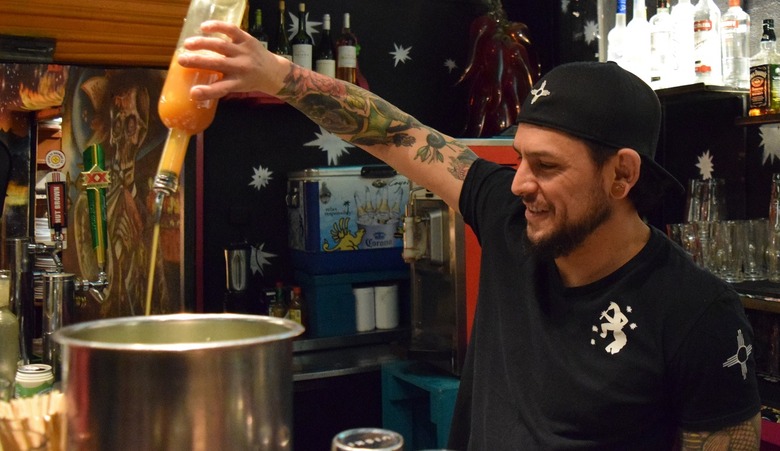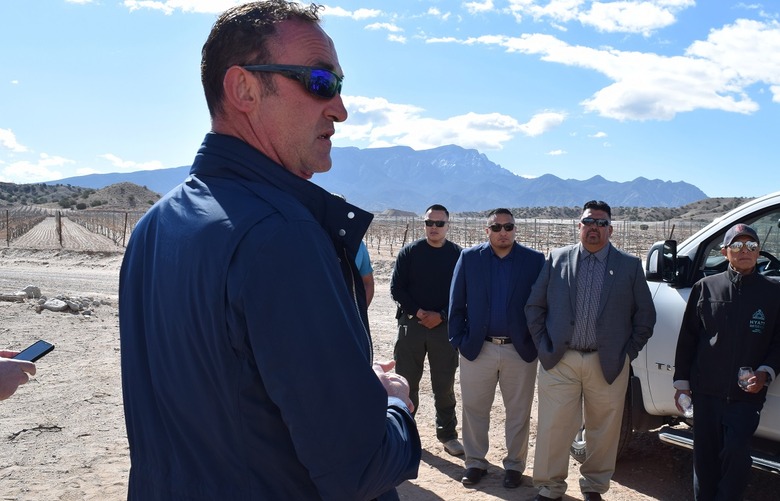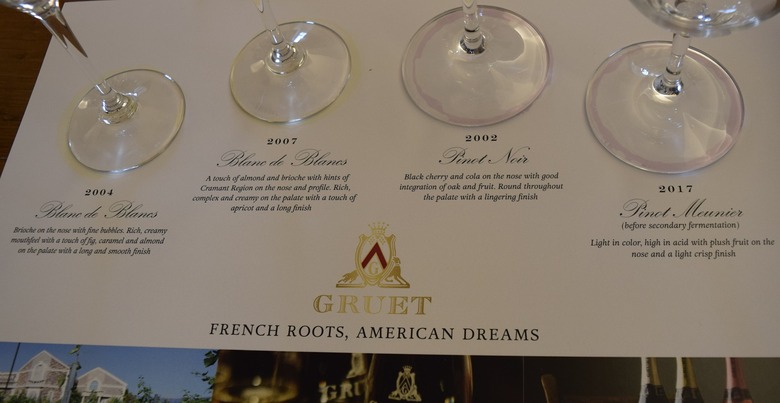Touring And Tasting In An Unexpected American Wine Region: New Mexico Gallery
On a recent drizzly Sunday afternoon in Las Cruces, in southern New Mexico, over a bowl of spicy chili, I sat chatting about locally produced wines with pioneer New Mexico grape grower and winemaker Paolo D'Andrea and Chris Goblet, executive director of the New Mexico Wine, whose guest I would be for the coming week.
"Except for the sparkling wines of Gruet, which you can buy anywhere in the U.S., almost no one else who makes wine in New Mexico has sales outside the state," I began. "So, no matter how good your wine is, how do you expect to get a positive reputation?"
To them, the answer was obvious. If they couldn't get their wines to out-of-staters, then have the out-of-staters come visit them — not just for the wine, but for the other attractions that lure about 34 million tourists annually to New Mexico: wild beauty, skiing, art, dozens of festivals, and a reputation among food lovers as the epicenter of Southwestern cuisine. "Come for the tourism, and fall in love with our wines" was the message.
And that's what I did for the next few days.
I spent most of my time visiting a half-dozen of the state's 50-plus wineries, both in the warmer southern part of the state, where most of the grapes are grown, and in the north, where wineries buy some grapes and grow some of their own at much higher altitudes. Along the way I also visited such geological wonders as the White Sands National Monument, ski resorts such as Ruidoso, and cultural attractions such as the homestead ranch of the late world-renowned painters Peter Hurd and Henriette Wyeth. Then, of course, everywhere there was marvelous food to pair with local wines.
The slogan of New Mexico Wine, by the way, is "Viva Vino" — "Long live wine." In fact that's not a bad toast — Viva Vino! Here's what I discovered while touring and tasting the New Mexican wine region.
Travel expenses for this article, including meals and wine tastings, were paid by New Mexico Wine.
Adobe & Chiles
What better symbols of traditional New Mexican culture are there than adobe architecture and a cuisine based on chiles? I start the first day of my journey with breakfast at Josefina's in the historic riverside town of Mesilla just outside Las Cruces.
Huevos Rancheros
My favorite breakfast of all time is huevos rancheros with a Bloody Mary, but I settled for a cup of brisk coffee alongside this classic dish. The dish ingredients vary — this morning, no beans — but over-easy eggs, piquant tomato-chile sauce, and corn tortillas are a must. Sour cream is on the way from the kitchen.
Bennie & Bernd
We take a tour of the Amaro Winery vineyards with owners Bennie (left) and Bernd Maier, who explain that Spanish priests brought grapevines to New Mexico in 1629, long before they reached California. The poor soils are great for vines, but irrigation is necessary. Spring frosts are always a worry.
Now That’s Italian!
Although French grapes are grown in New Mexico, southern European varieties such as tempranillo, sangiovese, refosco, and aglianico are much more common. Luna Rossa winemaker Paolo D'Andrea, who first started growing grapes here in 1986, supplies many wineries.
Chiles, Pork, and Pecans
That evening at Salud! de Mesilla, chile grower Chris Franzoy of Young Guns Produce tells us what's hot and what's not with New Mexico's go-to vegetable, while chef/owner Russell Hernandez treats us to crispy pork belly with red chile sauce and pipián made with the local go-to nuts — pecans.
Desert Snow
The next day, the road trip starts. On the way to the mountain town of Ruidoso — a ski haven for West Texans — we stop at White Sands National Monument, a vast stretch of snow-white sands with boardwalks and hiking trails. But best not to go when the Army is testing missiles (the road into the dunefield is occasionally closed on military orders).
Truck Stop
What's a winery without a photogenic pickup truck? Ruidoso native Jasper Riddle is the state's youngest winemaker, and his Noisy Water Winery is one of the fastest-growing. Like some other winemakers, Riddle produces entry-level sweet wines as well as more-sophisticated dry ones.
Hurd Herd
That night I bunk down in the adobe home of late artists Peter Hurd and Henriette Wyeth. Their son Michael Hurd, also a painter, heads conservation efforts that stretch beyond his Sentinel Ranch, oversees the family gallery, and offers guest cottages. That evening, we dine in the gallery's sea of art.
Getting Gamed
Dinner has two stars — chef Mashon Swenor of Hunt & Harvest restaurant, who prepared this local elk, sous-vide, with three-cheese cauliflower mash, carrots, and green chile crème, and Noisy Water's Jasper Riddle, who shot the elk and made the cabernet-zinfandel blend we drank with it.
Northern Exposures
Chef Kai Autenrieth prepares an apple and shrimp ceviche for a lunch at Four Seasons Resort north of Santa Fe, hosted by the Padberg family, owners of Vivac Winery. The winery and vineyard is in Dixon near Taos at the 6,000-foot level — riesling and chenin blanc territory.
Meal’s End
After our second home-hunted elk course in 24 hours, Autenrieth brings the meal to an end with a dessert course of Brie brûlée with melon slaw, chile jam, grilled brioche, and honey-coated pine nuts, served with a Vivac refosco from grapes shipped north from Paolo D'Andrea's vineyards.
Santa Fe Interlude
Santa Fe is arguably the food and drink capital of New Mexico, the place to do some serious restaurant- and bar-hopping. At Sazón, I sample chef Fernando Olea's array of eight mole sauces — six sweet and two savory — all delicious and all available at the restaurant's online store.
Tattoo This!
After tasting signature cocktails at four bars, highlighted by Winston Greene's rum-driven Kiss to Build a Dream On at Tonic, I settle in at Coyote Café to watch barkeep Dario Jiminez pour it on. After he shakes up a Chimayo Cocktail, it's table time for a lovely Gruet-hosted dinner.
Pueblo Vineyard
Champagne-born Laurent Gruet (left) has made great New Mexico sparkling wine since 1984. His most recent project is a prized vineyard co-owned by the Santa Ana Pueblo. Pueblo governor Glenn Tenorio (second from right) says, "It makes sense. We've always been farmers."
Sparkling Finish
Our last tasting is of vintage Gruet sparkling and still wines, which show how well New Mexican wines can age. The blanc de blancs 2007 is rich and Champagne-worthy, the 2002 pinot noir is mellow satin, while Laurent calls the 2017 pinot meunier "Gruet's future." Viva Vino, indeed!
More from The Daily Meal:
The Best Food and Drink in New Mexico
